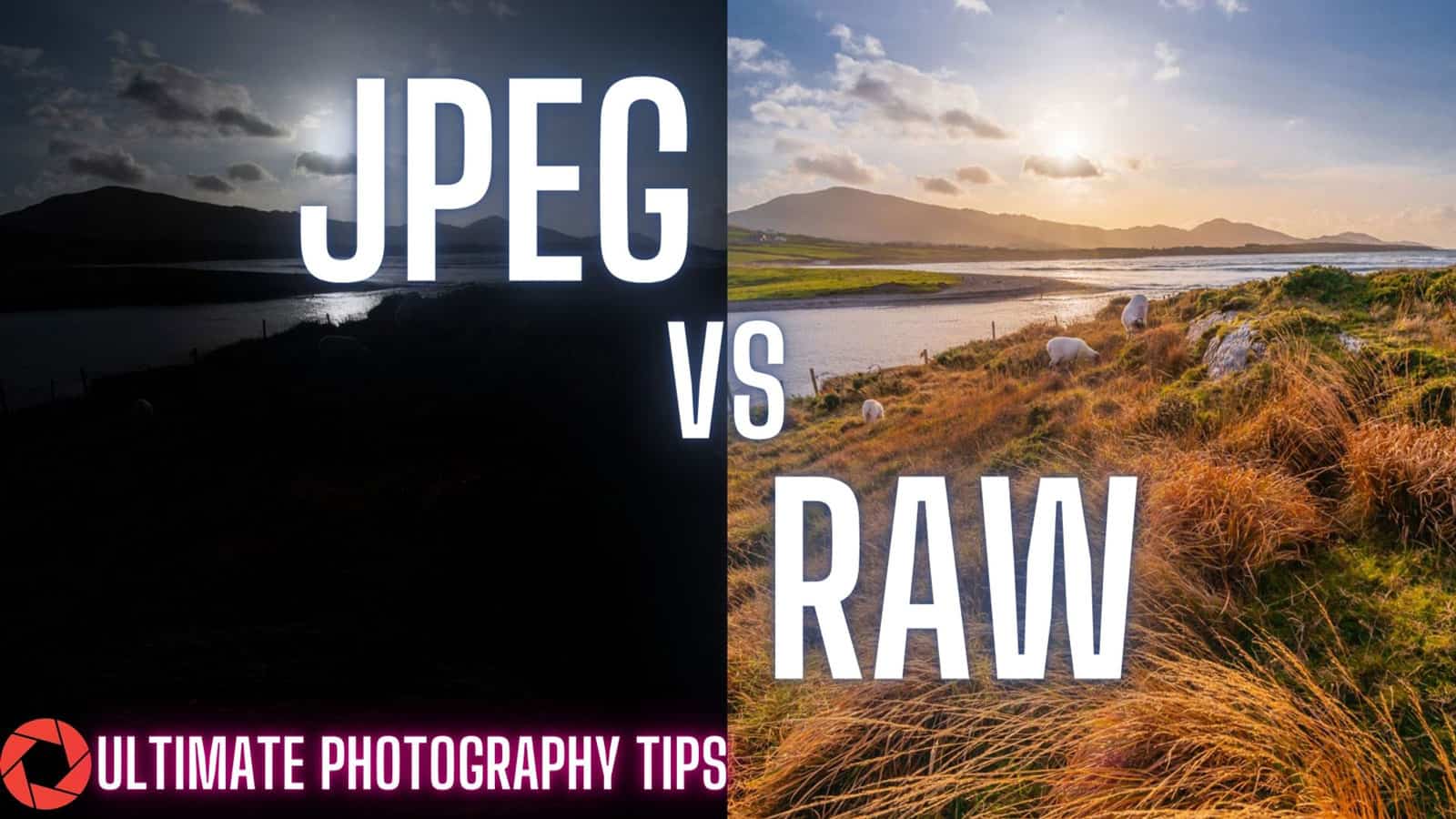Jpeg vs Raw which one is better and why?
Raw vs Jpeg what’s the big deal?
JPEG vs RAW, what’s it all about and why is this such an issue for photographers? Well in this article I am going to answer all your questions and clearly explain exactly why there is such a massive difference between these two file formats and which one is right for you.
I have a video above where I show you how to edit a raw file and I also edit exactly the same photograph in the Jpeg format so you can physically see how much of a difference there is between the two file formats.
First, let’s take a look at a few of the main technical differences between Jpeg and Raw photographs.
JPEG Pros
- Smaller file sizes.
- They can be printed immediately from your camera.
- They have been edited in camera for you.
- They appear sharper and more colourful immediately.
- Saves a lot of space on your storage devices and Memory cards.
JPEG Conns
- The JPEG compression deletes some details it thinks you won’t want.
- Often times it edits the photograph incorrectly.
- Loss of dynamic range.
- Less details for large prints.
RAW Pros
- Retains all the hidden details in your photographs.
- Gives you more control over the final results.
- Gives you greater dynamic range to recover shadow detail.
- Better for large prints.
RAW Conns
- Photographs have to be edited.
- Larger file sizes.
- More storage space needed for them.
- Images appear to be less sharp and dull at first inspection on your computer.
Let’s look at both file formats in a small bit more detail in my video below. Or scroll on for the rest of my tips… Speaking of tips you have to check out my Top 5 essential accessories for your camera bag and the beauty is you can buy them all for less than €30.- in total 🙂
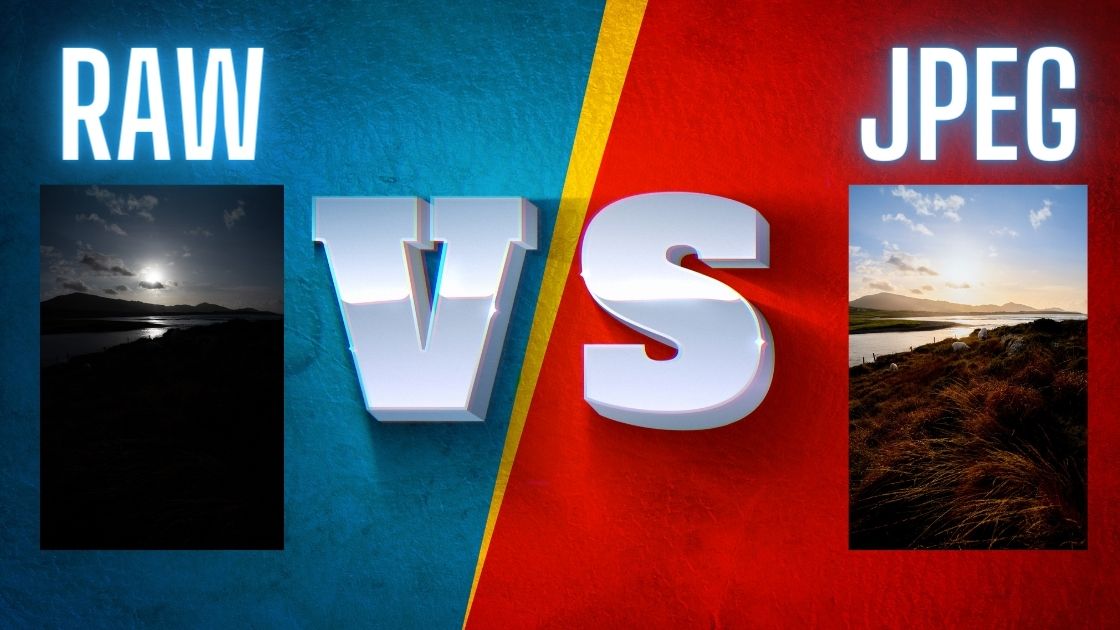
Jpeg vs RAW for beginners
Jpeg photographs.
Jpeg is basically a form of compression, so Jpeg file sizes are smaller asa result of this compression system, the issue here is it also gets rid of data it deems to be useless. By doing this it saves a lot of space on your memory card.
You may well be thinking that’s awesome and that’s a huge advantage to Jpeg files and this whole debate is already over before it even started, but getting rid of “useless” data is not always a good thing. I will explain why in more detail further down the page.
Secondly… with a jpeg photograph it’s also edited for you. Again this sounds like another positive to most people and yes again it is in ways.
So, to recap your camera captures the raw light in the photograph, edits it and compresses it for you all in a split second. Which in ways is mind blowing good but the issue here is that a camera sees light completely differently to the way the human eye does so it doesn’t always do a very good job of editing your photograph.
I am going to show you this in more detail further down the page but for now let’s take a quick look at Raw files and what they do.
Raw Photographs
When your camera is set to Raw mode this is what happens to your photographs…
As soon as you press the shutter button your cameras sensor absorbs the light (the actual photograph) and converts it into a raw file and then transfers all that light to your memory card. It basically does nothing to your your photograph.
The key here is you get all that sumptuous detail in your file even in the parts your camera thinks you don’t need any detail in.
The issue is though, that because everything is retained and the file isn’t compressed the raw file sizes are a lot larger, so it will eat up a lot more space on your memory cards.
The second issue is that you will have to edit your photographs… there is no way around that, Raw files look horrific as they are not sharp, they lack contrast and saturation as well as a few other minor issues.
Just look at the raw shot below comparred to the jpeg version alongside it. But wait till you see the edited raw file it’s just mindblowingly different.
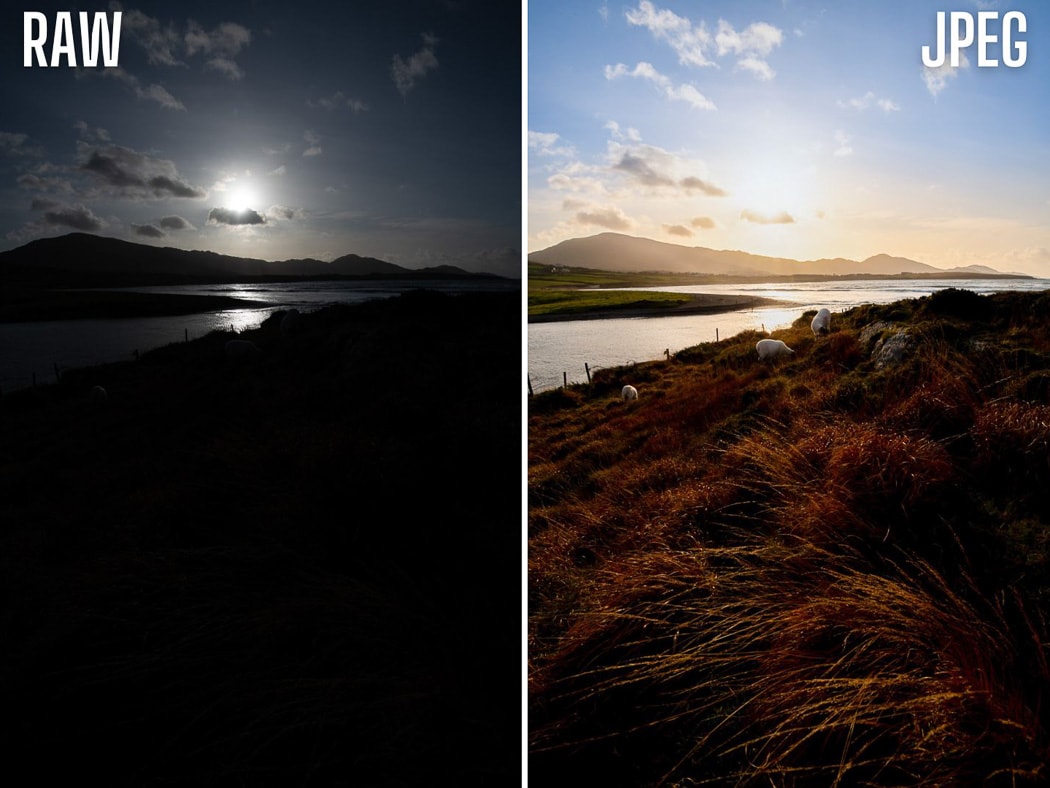
So why would you then take Raw Photographs?
The real point of shooting in Raw vs Jpeg for photographers is to keep all that detail. Yes, it’s all really down to the detail and control… Most photographers love to have all the control over the look or finish of their photographs.
In a jpeg file most of that glorious shadow detail (darker parts of your image) is deemed unnecessary and just deleted by your camera to save space.
In a raw file on the other hand all that detail is still there and you can edit the Raw photograph to bring out all those beautiful shadow details. This process while it might be more time consuming gives you a result that’s a lot closer to the way it was when you originally stood there and captured the scene.
At the end of the day we have to remember that’s what photography is all about… Capturing what you saw when you stood there and not your cameras interpretation of what it looked like.
Jpeg vs Raw file size.
On my 46mp camera a raw file is roughly around 50mb+ whereas a jpeg (fine) file in the same camera is about 20mb+ So the Jpeg file is is at least half the file size of the Raw photograph. Now if you step back to Jpeg Normal the file size is around 10mb only.
Why does your camera see it so differently?
It all comes down to how incredibly special the human eye is and how we can look at a scene and see such a huge variation in light, that by the way is called Dynamic range.
Your camera can only see about a third of that variation in light through a jpeg image. In a raw file after it is processed you can bring it back to roughly about two thirds of the dynamic range of the human eye. Those exact statistics are hotly debated in the medical world, I am no scientist so I will take there word for it.
While this is still not perfect it is an lot better than being able to see one third one third of the range of light in a photograph.
This is the principle reason why we most serious photographers take their photographs in RAW. Which brings us to….
How to edit a Jpeg vs raw file and how different are they?
You can use programs like Luminar Neo or ON1 Photo Raw 2024 (click on one of them for my review, tutorial and discount code) to edit your Raw photographs, the beauty of it all is you can get a free trial with them so you can have a play around with editing Raw files first and see if it’s for you or not.
I would normally use a Formatt Hitech graduated filter when taking photographs to help balance out the image, these shot were only taken to be used an example of what a Raw Photograph can do.
So lets have a look at a raw file…
The below photograph was shot in RAW and the exposure was set to expose the sun reasonably correctly. As you can see the main bulk of the photograph is under exposed so it’s very dark apart from the sun. This photograph has a huge dynamic range and even when standing there looking at the scene it was difficult taking it all in with the human eye without squinting.
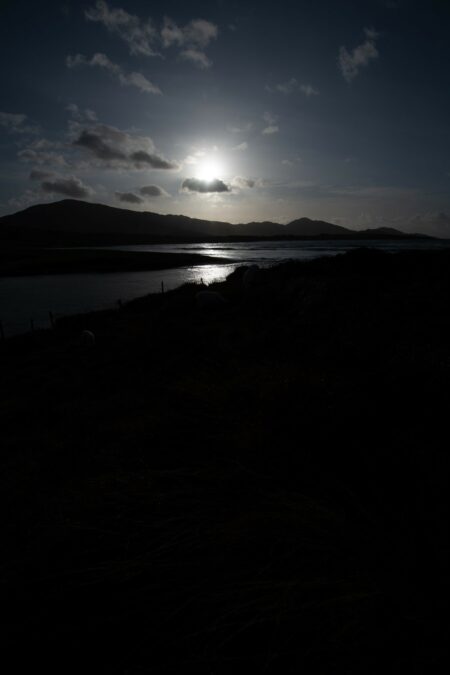
The day I took these photographs I was shooting raw and jpeg simultaneously so the below shot is the Jpeg photograph captured in camera.
The jpeg file appears to do a much better job initially but wait till you see what you can do with the raw file.
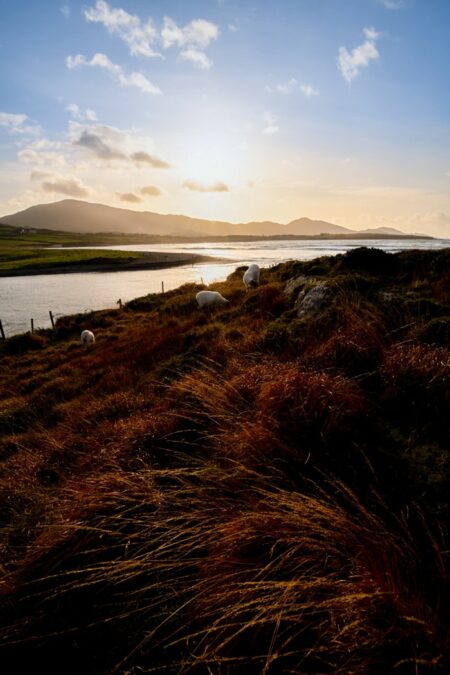
When you look at the Jpeg vs Raw file you can clearly see the jpeg file has a lot more detail in the foreground straightaway and the sheep are also clearly visible. This is all down to the fact that your camera has edited the Raw file it captured for you and as well as brightening the photograph it has also added sharpness, contrast, saturation and boosted the shadow detail as it converted it to a Jpeg file.
The Jpeg photograph still isn’t right though as you can see the grass is still very dark and lacking texture. Before we do anymore with the Jpeg version let’s try editing the Raw photograph and see if we can recover a bit more detail in it?
Below is the edited raw file and wow look at that for a transformation. It’s hard to believe they are the same photograph.
In my video further up the page you can see me doing this step by step and showing you the simple editing process involved. This Jpeg vs Raw debate has truly been turned on its head now…
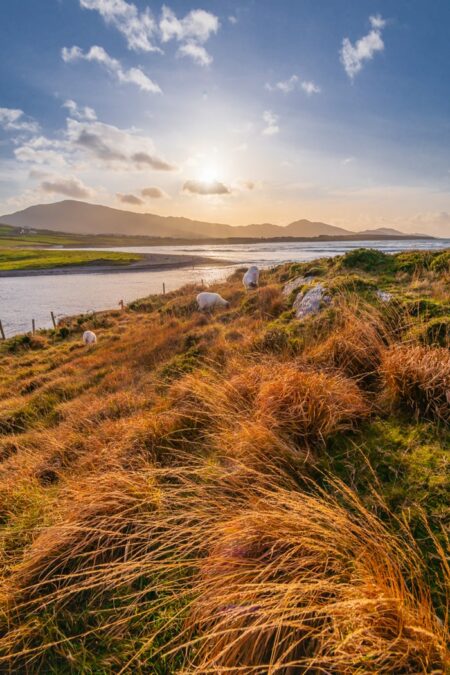
I have the Raw photograph and the edited Raw photograph side by side below just so you can see the transformation in the photograph and the sheer power of capturing a photograph in Raw. Now a slight point to note here is that the camera I used for this particular shot was a Nikon D850 which has an incredible Dynamic range so not every camera out there can do this.
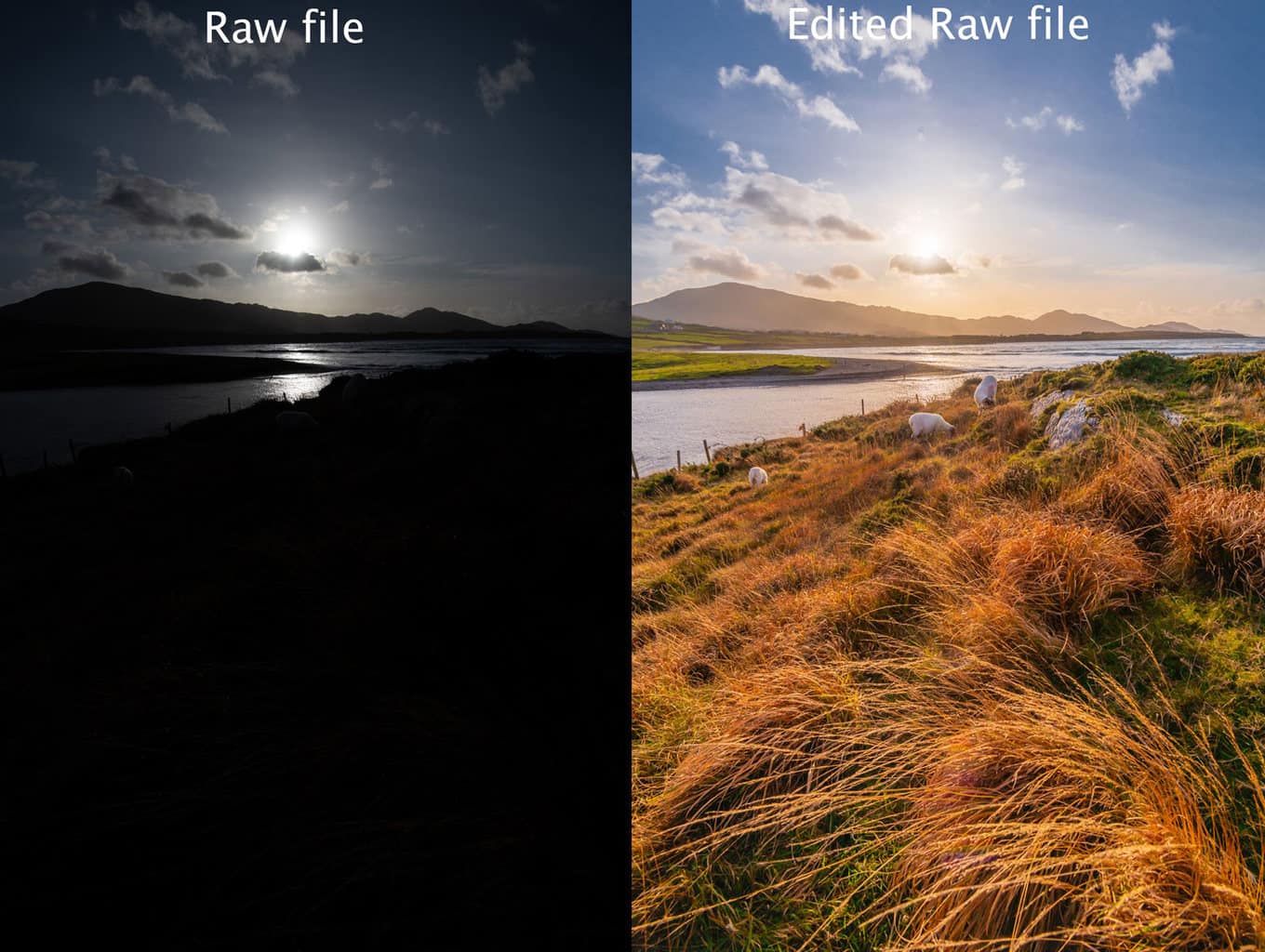
The edited Raw photograph result is almost exactly what it looked like when I was standing there. That’s the power of capturing photographs in the Raw format. Yes, they are larger file sizes and they involve more work as you have to edit them but just look at the results you can get from them.
So how did I edit the Raw photograph to get it to look like that?
In this instance I used Lightroom to edit the photograph, I simple brought the highlights down (I made the brighter parts of the scene slightly darker) and I brought the shadows up (I brightened the darker parts of the scene) then I brought up the overall exposure (brightness) a bit to brighten the overall picture and your done. Again it’s all shown in the video below.
Editing the Jpeg Photograph.
So let’s try editing the jpeg file now in exactly the same way and see how that goes. It was a lot brighter to start with so you would think it would be very easy to get similar results…
The below photograph is the best result I could get from the Jpeg file and again you can see this in the video further up the page. Now looking at the Jpeg vs raw edited photographs there is a clear winner and all that extra detail in the Raw file has been it’s saviour here.
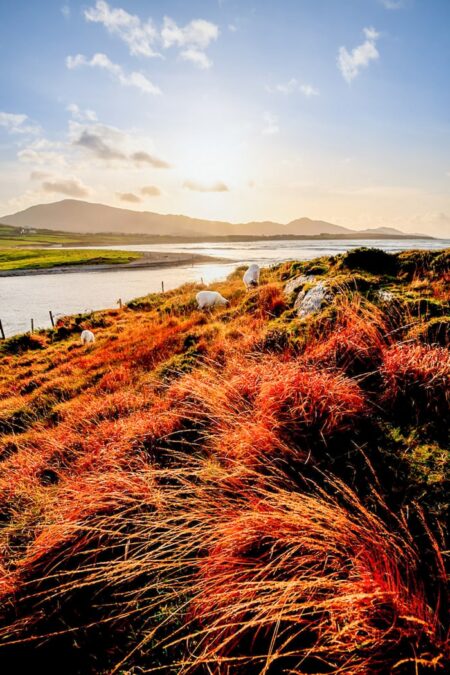
There were two immediate issues with the Jpeg file, firstly, when I tried the same steps as I used with the Raw file the grass as you can see started to change colour and the second issue was the darker parts of the image simply had no detail no matter what I did with them.
The dark parts they will never come back because those details were stripped out of the photograph when it was converted to a Jpeg image. All I did in editing the jpeg file was drop the highlights and bring up the shadow details and the overall exposure which was exactly the same way I edited the raw file.
So why did the colours change?
Remember I mentioned before that a jpeg file is a compressed file and that your camera strips out any information it deems to be useless… well the texture in the dark patches of the grass and the variation of tones and colour in the grass were deemed to be useless and have been deleted. When I increased the shadow brightness and exposure that’s what I got then.
All these “Useless” bits of information were deleted because your camera decided they weren’t needed. This is exactly why most professional photographers only ever shoot in Raw. It gives you a lot more room to play around with in editing the photograph afterwards.
That photograph in Jpeg would be impossible to capture in a single image without using a graduated filter.
But as you can see it’s entirely possible to capture it in Raw in a single shot.
A certain amount of this depends on your camera and its dynamic range, I was using the Nikon D850 for this photograph and as you can see it has an amazing dynamic range.
Again I highly recommend you have a look at the video further up the page as I talk you through each step of the editing process.
Raw or Jpeg and which is right for you?
Well, the answer should be fairly straight forward but here is where I throw a spanner in the works and say why not shoot both. That way when you need the extra detail it’s there in the raw file and when you don’t you have a fairly well edited photograph in your Jpeg file, which helps to streamline your workflow.
I have an article and video on What is ISO in Photography, Long Exposure photography tips, Seascape Photography Tips and how to shoot in Manual mode blog posts all in my photography tips and tricks section here (it’s also in the menu at the top of the page).
Lastly, can I just say if you are shooting away from the sun or if it’s an overcast day, the fact that there is not as much dynamic range or contrast in your scene means that you can easily capture every bit of detail you will need in a Jpeg file. So you don’t always need this extended dynamic range.
If you are printing extremely large file sizes there is also an added advantage of shooting in raw, that’s a whole other debate or blog post though.
Don’t forget to checkout my group and one to one Photography workshops in Ireland here if you want to dramatically improve your photography today.
See you out there,
Kieran.
